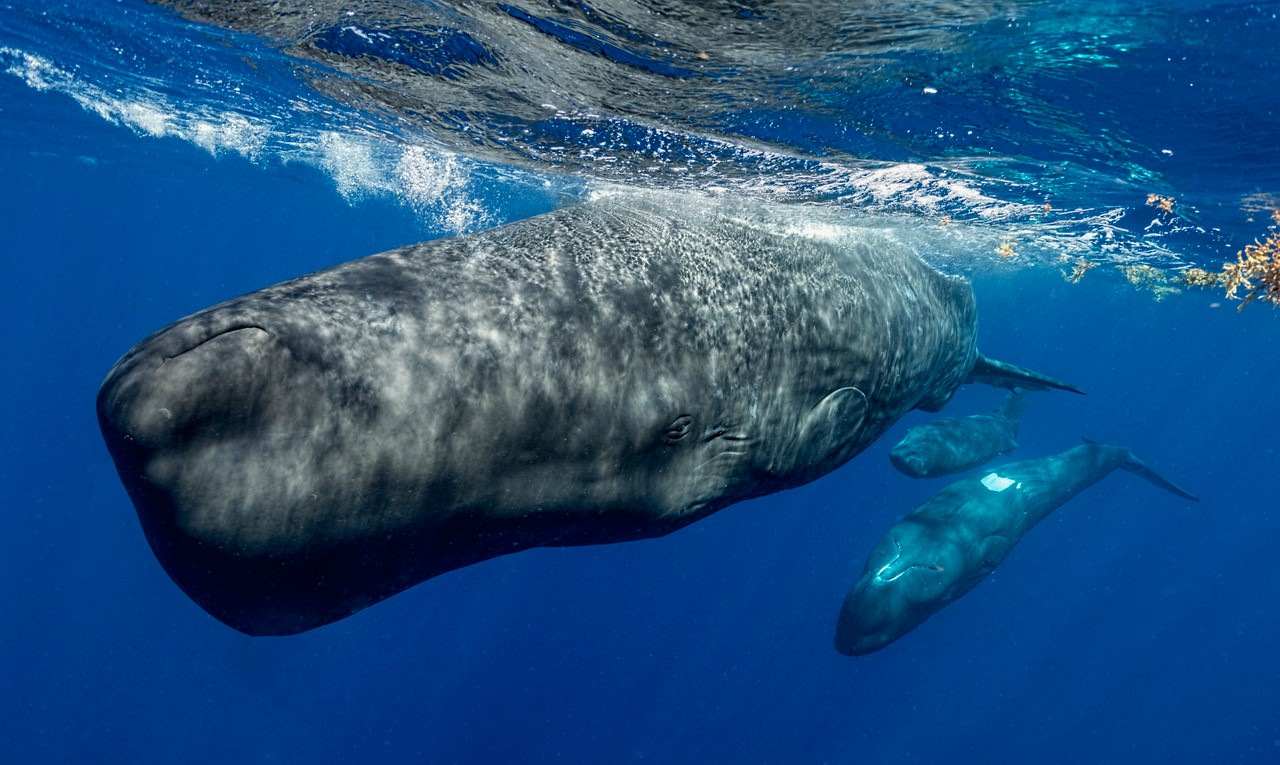Media release
From:
Springer Nature
1. Ecology: Investigating sperm whales’ complex calls *IMAGE & VIDEO*
Sperm whale communication may be more complex than previously thought, according to new research published in Nature Communications. Sperm whales can combine and modulate different clicks and rhythms to create complex calls, similar to human language, the authors suggest.
Communication is important for social animals to help them to make group decisions and coordinate joint tasks, such as foraging and rearing young. Sperm whales are sociable mammals that communicate with each other using sequences of clicks. While some of their clicks have previously been shown to communicate their identity, little else is known about the sperm whale communication system.
Praytusha Sharma and colleagues used data from The Dominica Sperm Whale Project, the largest repository of sperm whale data. They analysed recordings from about 60 different whales from the Eastern Caribbean sperm whale clan and use them to define a ‘Sperm Whale Phonetic Alphabet’ of click combinations from recordings of this clan. They found that the whales’ communication system is more complex and has a greater information-carrying capacity than previously thought. The combination and structure of the click sequences produced was found to depend on the conversational context of the individuals. The authors also identify a ‘combinatorial structure’ to their language, where they can combine and modulate different clicks and rhythms to create complex vocalisations, similar to human language.
While the function and meaning of the click combinations is still unknown, the authors suggest that sperm whale language is potentially capable of representing a large number of possible meanings.
Attachments
Note: Not all attachments are visible to the general public.
Research URLs will go live after the embargo ends.

Research
Springer Nature, Web page
The URL will go live after the embargo lifts.
Journal/
conference:
Nature Communications
Organisation/s:
Massachusetts Institute of Technology, USA
Funder:
This analysis was funded by Project CETI via grants from Dalio Philanthropies
and Ocean X; Sea Grape Foundation; Virgin Unite, Rosamund
Zander/Hansjorg Wyss, Chris Anderson/Jacqueline Novogratz through
The Audacious Project: a collaborative funding initiative housed at TED
to P.S., S.G., R.P., D.F.G.,D.R., A.T. and J.A. Further fundingwas provided
by the J.H. and E.V. Wade Fund at MIT. Fieldwork for The Dominica
Sperm Whale Project was supported by through a FNU fellowship for the
Danish Council for Independent Research supplemented by a Sapere
Aude Research Talent Award (1325-00047A), a Carlsberg Foundation
expedition grant (CF14-0789), two Explorer Grants from the National
Geographic Society (WW-218R-17 and NGS-64863R-19), a grant from
Focused on Nature, and supplementary grants from the Arizona Center
forNatureConservation, Quarters ForConservation, the Dansk Akustisks
Selskab, Oticon Foundation, and the Dansk Tennis Fond all to S.G. Further
funding was provided by a Discovery and Equipment grants from
the Natural Sciences and Engineering Research Council of Canada
(NSERC) to Hal Whitehead of Dalhousie University and a FNU large frame
grant and a Villum Foundation Grant (13273) to Peter Madsen of Aarhus
University. We thank the Chief Fisheries Officers and the Dominica
Fisheries Division officers for research permits and their collaboration in
data collection; all the crews of R/V Balaena and The DSWP team for data
collection, curation, and annotation; as well as Dive Dominica, Al Dive,
andW.E.T. Dominica for logistical supportwhile in Dominica.



 International
International



